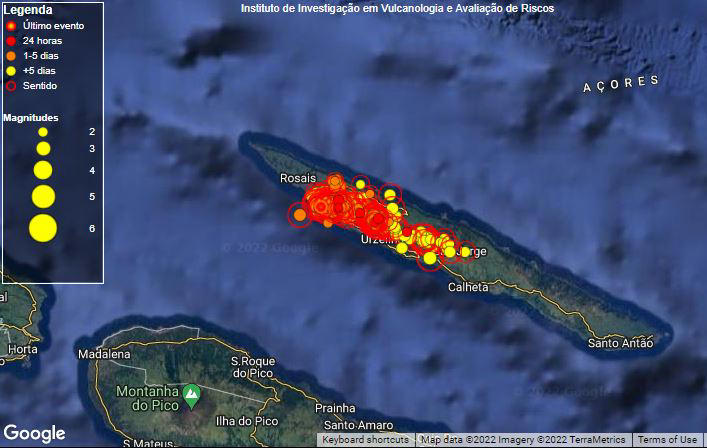
By Djaffar Al Katanty
GOMA, Democratic Republic of Congo (Reuters) -An earthquake on the border of Congo and Rwanda razed buildings in the city of Goma on Tuesday and stoked fears a nearby volcano would erupt again three days after dozens of people were killed and 17 villages were destroyed by lava.
The quake, measured at 5.3 magnitude by the Rwandan Seismic Monitor, was the largest of over 100 tremors that have followed the eruption on Saturday of Congo’s Mount Nyiragongo volcano, one of the world’s most active and dangerous.
“We know that children were injured when a building collapsed on Tuesday just a few steps from the UNICEF office in Goma,” the U.N. children’s agency said.
The quake appeared to have destroyed several buildings in the city of two million, and a witness said at least three people were pulled from the rubble and taken to hospital.
It struck at 11:03 a.m., originating in Rugerero sector in western Rwanda, according to the Rwanda Seismic Monitor.
The city experienced 119 tremors on Monday, but the intensity has started to decrease, said Kasereka Mahinda, scientific director at the Goma Volcano Observatory.
The earthquakes were caused by the tectonic plates seeking to recover their equilibrium after the eruption, a phenomenon seen after the eruptions in 2002 and 1977.
“As soon as the rift recovers its balance, the tremors will stop,” he told Reuters.
Multiple cracks in the earth have emerged in Goma in the last day, although businesses have re-opened across the city and life appeared to be largely returning to normal for those who did not lose their homes.
About 1,000 houses were destroyed and more than 5,000 people displaced by the eruption, the United Nations has said.
“According to the authorities, 32 people have died in incidents related to the eruption, including seven people killed by lava flow and five others asphyxiated by gases,” the U.N. refugee agency UNHCR said.
The lava flow stopped a few hundred meters short of the city limits, but wrecked 17 villages on the way, cut the principal electricity supply and blocked a major road, disrupting aid deliveries to one of the most food-insecure places in Africa.
The lava lake in the volcano’s crater appears to have refilled, raising fears of new fissures or another eruption, UNHCR said. Goma-based volcanologist Dario Tedesco said on Monday he feared the tremors could open another fracture.
The government said a 1.7 km (1.1 mile) stretch of road connecting Goma to the north of the province was covered with lava, blocking the movement of people and goods to an area where some 280,000 people have been displaced by conflict and fighting since January.
The United Nations said it would take days to re-open the road and that it was seeking permission from the government to start re-using Goma airport. The hub for aid relief for the east of the country was closed after lava came within 300 meters (yards).
More than half a million people have lost access to safe water, as lava destroyed one of the most important water supply sources, the International Federation of the Red Cross said.
“Although the flow of lava has stopped, authorities have warned that the danger is not yet over and that seismic activity in the area could cause further lava flows. Infrastructure damage is not ruled out,” the IFRC said.
(Reporting by Djaffar Al Katanty and Fiston Mahamba; Additional reporting and writing by Hereward Holland; editing by Philippa Fletcher and Alistair Bell)












